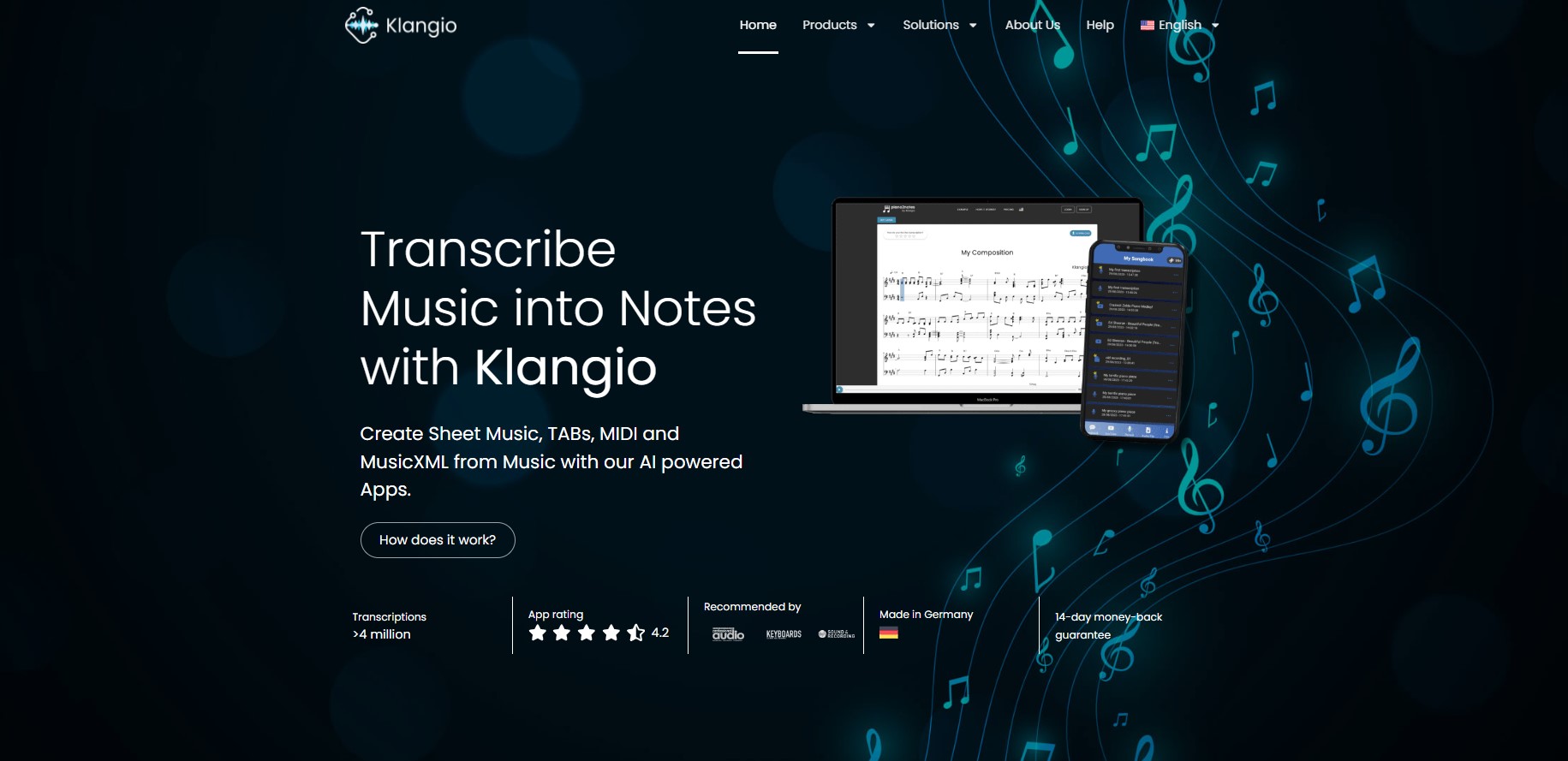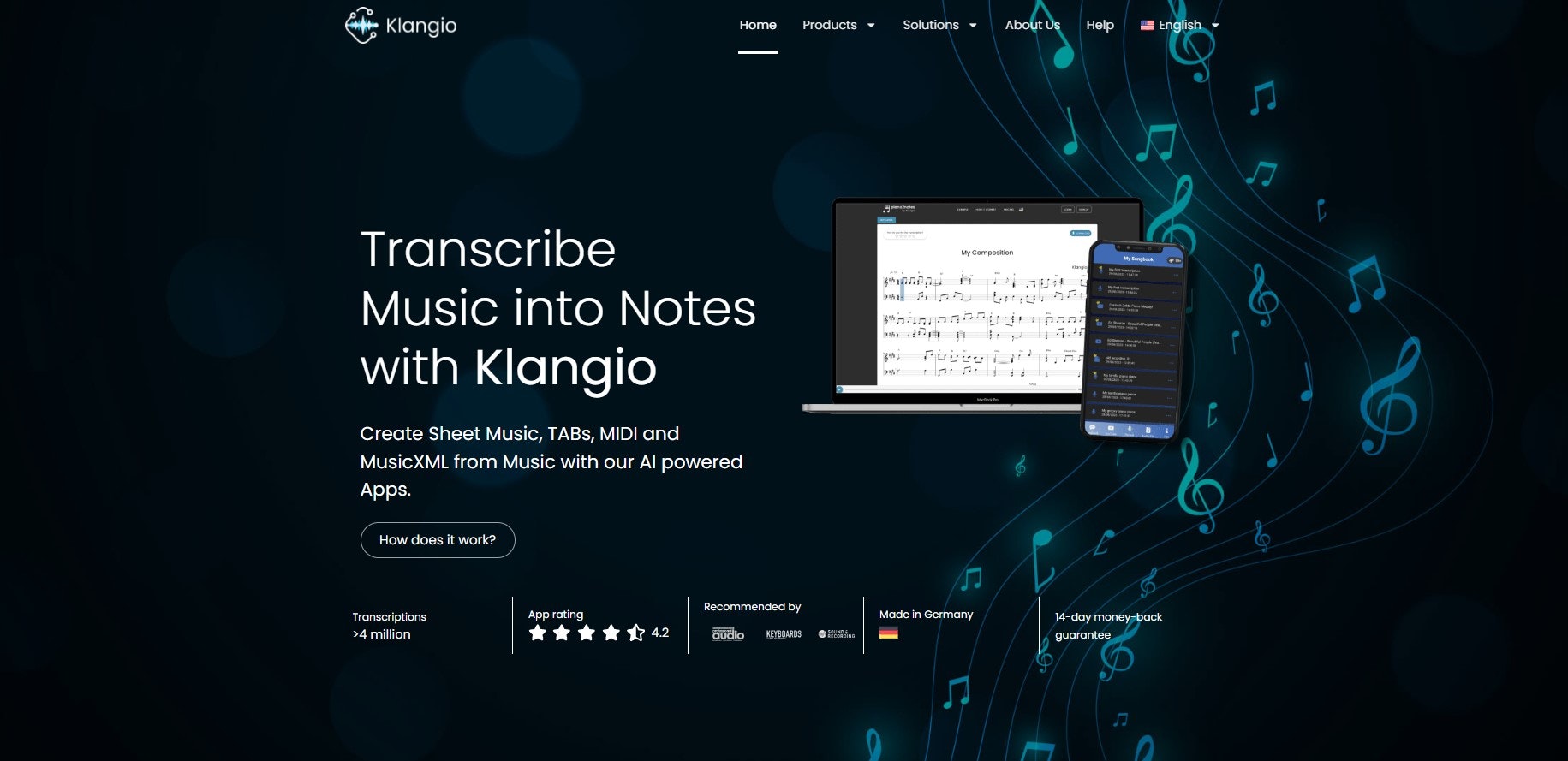
Table of Contents
Overview
Tired of painstakingly transcribing music by ear? Klangio’s Transcription Studio offers a revolutionary solution, leveraging the power of AI to convert audio recordings into readable and editable sheet music, MIDI, and MusicXML formats. This innovative platform is designed to streamline the transcription process for musicians, educators, and composers alike, saving valuable time and effort. Let’s dive into what makes Klangio’s Transcription Studio a game-changer.
Key Features
Klangio’s Transcription Studio boasts a powerful set of features designed to simplify and enhance the music transcription process:
- AI-powered transcription: At its core, the platform utilizes sophisticated machine learning algorithms to accurately transcribe audio recordings.
- Converts audio to sheet music, MIDI, MusicXML: Offers versatile output options, catering to various needs from traditional notation to digital audio workstations.
- Supports various instruments: Designed to work with a wide range of instruments, making it a versatile tool for diverse musical styles.
- Web-based interface: Accessible from any device with an internet connection, eliminating the need for software installation.
- Editable output formats: Allows users to refine and customize the transcribed music to their exact specifications.
How It Works
The process is remarkably straightforward. Users simply upload an audio file to the Transcription Studio. The platform then employs its advanced machine learning algorithms to analyze the music, identifying notes, rhythms, and other musical elements. This analysis is then translated into sheet music and digital formats like MIDI and MusicXML. Once the transcription is complete, users can download the output or further edit it within the platform to perfect the arrangement.
Use Cases
Klangio’s Transcription Studio opens up a world of possibilities for various musical applications:
- Musicians transcribing compositions: Quickly convert recorded improvisations or song ideas into usable sheet music.
- Music teachers preparing scores: Easily create sheet music for students to learn and practice.
- Composers converting recorded ideas: Transform hummed melodies or recorded instrumental riffs into fully realized compositions.
- Students analyzing musical structure: Gain a deeper understanding of musical pieces by examining their transcribed form.
Pros & Cons
Like any tool, Klangio’s Transcription Studio has its strengths and weaknesses. Let’s examine the key advantages and disadvantages.
Advantages
- Accurate transcription for supported instruments.
- Time-saving automation significantly reduces transcription time.
- Intuitive interface makes the platform easy to learn and use.
- Multiple export formats provide flexibility for various workflows.
- No need for manual notation, freeing up time for creative pursuits.
Disadvantages
- Limited accuracy with complex or polyphonic audio.
- May require post-editing to correct minor inaccuracies or refine the arrangement.
- Requires internet connection to access and use the platform.
How Does It Compare?
While Klangio’s Transcription Studio offers a comprehensive solution, it’s helpful to consider its competitors. AnthemScore focuses primarily on pitch detection and offers limited export options. ScoreCloud excels at real-time MIDI input but may be less accurate when transcribing audio recordings compared to Klangio. Klangio strikes a balance between accuracy, versatility, and ease of use.
Final Thoughts
Klangio’s Transcription Studio presents a compelling solution for anyone seeking to streamline the music transcription process. Its AI-powered engine, versatile output options, and user-friendly interface make it a valuable tool for musicians, educators, and composers. While it’s not perfect for every scenario, its strengths far outweigh its limitations, making it a worthwhile investment for those looking to save time and effort in their musical endeavors.

